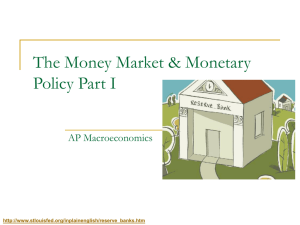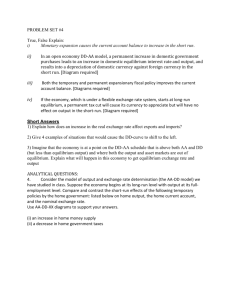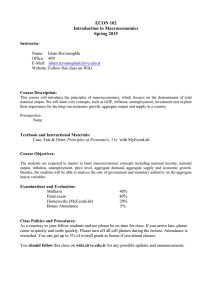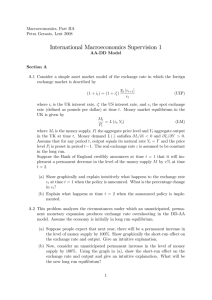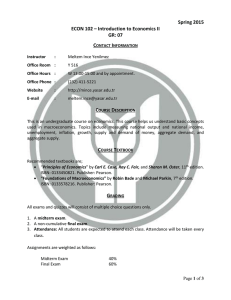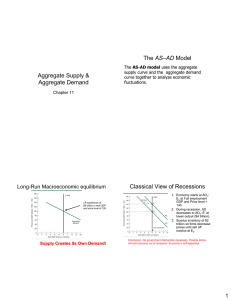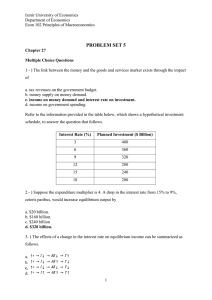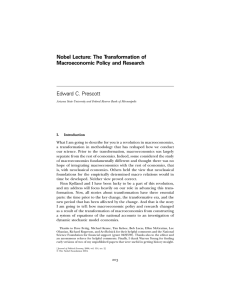Short-Run Equilibrium
advertisement
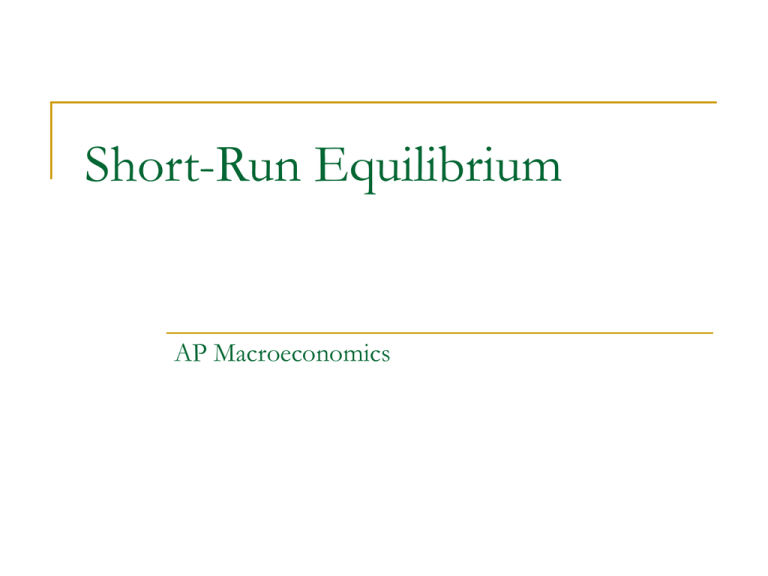
Short-Run Equilibrium AP Macroeconomics Where we came from… Aggregate supply: the quantity of output that firms are willing and able to produce in the economy. In the long run, the level of output depends on capital stock, the labor force, and the level of technology. In the short run, the level of output depends on the amount of labor employed with a given level of capital and technology. Where are we going? In this lesson, we’ll focus on: Short-run equilibrium between aggregate supply and demand Changes in output and the price level if aggregate supply or demand changes Equilibrium Revisited…in the Short Run… Short-run macroeconomic equilibrium occurs when real GDP demanded equals real GDP supplied. Equilibrium point on this graph is Point A (output level Y) Visual 3.11, Unit 3 Macroeconomics, National Council on Economic Education, http://apeconomics.ncee.net A long-run thang… In the long-run, you see the equilibrium occurs at Point B. Visual 3.11, Unit 3 Macroeconomics, National Council on Economic Education, http://apeconomics.ncee.net But, but, what if…? What if there is an increase in aggregate demand? Then the new equilibrium is at a higher price level, and a higher level of output. What’s the response? Firms increase production. This happens when demand shifts…not a change in quantity demanded! What is demand decreases? Visual 3.11, Unit 3 Macroeconomics, National Council on Economic Education, http://apeconomics.ncee.net And now… Some resources: http://www.reffonomics.com/textbook2/macroec onomics2/keynesianthought/keynesiancross. swf Works Cited Economics of Seinfeld. Demand. http://yadayadayadaecon.com/clip/46/ Krugman, Paul, and Robin Wells. Krugman’s Economics for AP. New York: Worth Publishers. Morton, John S. and Rae Jean B. Goodman. Advanced Placement Economics: Teacher Resource Manual. 3rd ed. New York: National Council on Economic Education, 2003. Print. Reffonomics. www.reffonomics.com.

